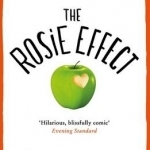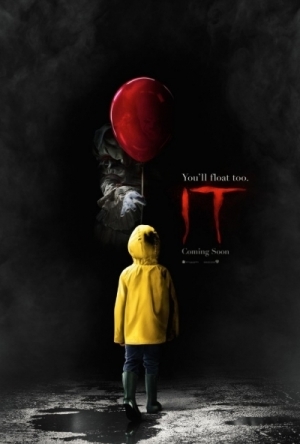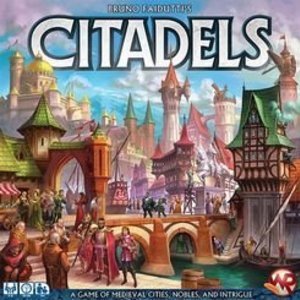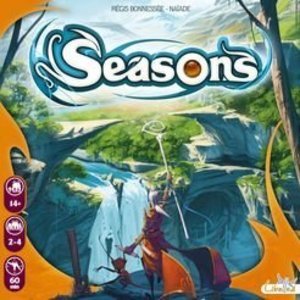BankofMarquis (1832 KP) rated It (2017) in Movies
Feb 14, 2018
But...is it scary? Sure...scary enough, but this adaptation of Stephen King's bestseller is much, much more than a scary movie.
One of the best screen adaptations of a Stephen King book, ever, IT tells the story of a group of13 year olds in Derry, Maine (one of the main towns featured in a variety of King's stories). It is 1989 and children have been going missing at an alarming rate. The adults in the town seem impassive about this, and when the younger brother of one of the gang goes missing, this "Loser's Club" investigates. What they find is a horrifying evil at the center of it all.
Like the plot of this film, there is much, much more going on in this film than what that last paragraph suggests, for this story is not only about the mystery of the missing children, it is a loving look back at childhood, friendship, caring and bonding. Think of this film as STAND BY ME meets...well...a killer clown.
And the clown IS killer. As played by Bill Skarsgard (TV's THE CROWN), Pennywise The Dancing Clown is slyly sinister, drawing the children in as a spider would a fly. It is only when the children are close (and alone) does he drop the guise of niceness and pounce. This is an intense and terrifyingly terrific performance, keeping the fine line between realism and camp (a line that Tim Curry trounced all over in the TV Mini-series version of this material in the 1980's).
I'm a big fan of Stephen King's writing (having read nearly all of his books and short stories) and I walked out of the theater thinking "finally, someone figured out the right way to make a Stephen King thriller work on the screen" and that someone is Director Andy Muschietti (MAMA). He guides this film with a strong hand, not wavering in his vision or sense of purpose as to where (and how) he wants this story to go. He let's the young actor's lead this story, with Skargard's clown pouncing every now and then. This works well, especially when infusing something that is sorely lacking, typically, in these types of films - humor.
And the humor, mostly, falls into the hands of Richie Tozier (Finn Wolfhard, STRANGER THINGS). He is an absolute bright spot injecting just the wrong (or maybe it is right?) comment in a tense situation, just as a 13 year old boy would do. As part of the "Loser's Club", he holds a bright spot in keeping things together when the mood threatens to get too grim or dire. And grim and dire is what is following this set of "Loser's", a veritable "who's who" of loser stereotypes. There is the "fat kid", Ben Hanscome (Jeremy Ray Taylor, ANT-MAN, in a sweet performance), the "always sick kid with the overbearing mother", Eddie Kasbrak (Jack Dylan Grazer), the "Jewish kid", Stanley Uris (Wyatt Oleff) and the "Black Kid", Mike Hanlon (Chosen Jacobs).
But the heart and sole of this film is the two main leads of the "Loser's Club", Bill Denbrough (Jaeden Lieberher, star of two criminally under-viewed gems MIDNIGHT SPECIAL and ST. VINCENT) and Beverly Marsh (Sophia Lillis, a relative newcomer that bears watching in the future). Both are harboring deep, emotional scars - Bill blames himself for the death of his brother by Pennywise and Beverly is (wrongly) viewed as a 13 year old slut by school rumor and innuendo and is sexually harassed by her father. The relationship between these two and the rest of the Loser's Club is the real treat of this film and the actor's are up to the challenge to draw us in and care about what happens to them when they are, ultimately, separated and confronted by Pennywise.
I was surprised by how little graphic gore there was in this film (though there is plenty of blood) and there is a little too many "jump scares" for my taste, but these are quibbles for a very good, very intense "scary film".
I floated out of the cinema after seeing this film You'll float too.
Letter Grade: A-
8 (out of 10) stars and you can take that to the Bank (ofMarquis)

The Rosie Effect
Book
The Rosie Effect is the charming and hilarious sequel to Graeme Simsion's bestselling debut novel...

Tactical NAV - GPS Navigation App For Military and First Responders
Navigation and Productivity
App
Created by a U.S. Army soldier while deployed to Afghanistan in support of Operation Enduring...
Reed Morano recommended Honey Boy (2019) in Movies (curated)
Alice (12 KP) rated Of Sand and Malice Made (The Song of the Shattered Sands, #0.5) in Books
Jul 3, 2018
Ceda is 15 when the story begins and it starts off with her picking a fight with someone who – in the beginning – gives off a secondary character kinda vibe, almost filler but ends up being an integral part of the story later on. Brama had apparently stolen a purse that Ceda wad tasked to collect and Ceda decided she’d rather fight him than find the purse. That came across as quite juvenile particularly when her “boss” pointed out the same thing that I thought.
The story progresses pretty slowly for the first 60 or 70 pages where it does eventually improve but there’s a distinctly Middle Eastern vibe to this story. It’s sort of like a twisted sci-fi type of Aladdin story.
The pit fighting is few and far between and for a character who is called the White Wolf I would have preferred a little more fighting and a little less talking but the steroidal like properties to the flower petals is amazingly unique, I don’t think I’ve ever read that in a book so kudos to that.
The writing style was a touch different to what I’m used to but it was written quite well. As mentioned above there was a distinctly Middle Eastern vibe to this story and the descriptions of the desert and other areas in Sharakhai were beautifully written and it almost made me feel like I was back on holiday in Egypt which was a lovely experience.
The concept of Rumayesh was really good – a semi corrupt demonic type being who overtakes the body of her “chosen” one – and Rumayesh took an awful big shine to Ceda which is where the story basically followed. Now having not read Twelve Kings I am completely unable to comment on how the story progresses in that book but the plot line in this novella was drawing to the mind and the descriptions of what was happening were very good.
Apart from my initial dubious feeling and the subsequent lack of pit – fighting for a story based on a pit-fighter I did enjoy Of Sand and Malice Made but I don’t think that it is entirely my thing and I don’t think I’d be continuing the story anytime soon though I do look forward to seeing where this novella leads.

Sketch Pad 3 - Unlimited Canvas
Productivity and Education
App
Thank you for all your support. Sketch Pad has now been downloaded more than 1,200,000 times Best...
Purple Phoenix Games (2266 KP) rated Citadels in Tabletop Games
Aug 13, 2021
In Citadels players will be donning the mantle of potential Master Builders and will need to build the greatest buildings within the city and manipulate the powers of special people within its walls. The game ends when a player has built their seventh district building. The player with the most VP at this time will be crowned Master Builder and winner of Citadels!
To setup, decide which eight characters will be used in the game, gather their cards and tokens, and place their tokens in ascending order on the table. This is to remind all players which characters (and their rank) is in play. Assemble the district (building) cards per the rules and shuffle the deck. Deal each player four of these district cards along with two gold coins. The eldest player will begin the game as the current First Player (complete with crown mini) and will begin the first phase of the first round.
Citadels is played over several rounds, each with two phases played within. The first phase is the Selection Phase, where the current First Player takes the character cards, shuffles them, adds zero to two cards (dependent upon number of players) face-up on the table and one card face-down. They then choose from the cards remaining in hand which character’s powers they would like to enact for the turn. The cards are passed to the next player in line who will do the same, and so on around the table.
Once all players have chosen their character card, the Turn Phase can begin. The current First Player (the one with the crown) will announce the characters in rank order, with the lowest character going first. In a typical game using only original base characters, this is “1: Assassin.” Whomever chose the Assassin card will flip over their character card, perform its special power, and then continue with their turn. In this case, the Assassin’s special power is to announce the name of a CHARACTER to assassinate. NOTE: This does NOT mean the name of the PLAYER. So the Assassin could choose to assassinate the King character, not the Travis player. After the character has used their power, the player can continue with the rest of their turn, though some character powers may be used at any time during the player’s turn.
After the character power is used, the player will gather resources in the form of two gold coins from the bank or by drawing two district cards from the deck and choosing one to keep in hand. After this choice, the player may then build one district in their play area if they wish and if they can afford to do so. Once complete, the crowned First Player will call out the next character rank (2: Thief in our example) who will continue their turn in the same way. The game continues in this fashion until a player has built their seventh district. The round continues until all players have had an equal amount of turns. Players then count VP on district cards and bonuses per the rulebook. The player with the most VP at the end of the game is crowned the Master Builder and winner of Citadels!
Components. I have to say that I enjoyed the components in the older version of Citadels I used to have just fine. I had sleeved all my cards, and the gold coins were nice back in the day. This version, however, includes many more components and each one is higher quality than the previous version’s. The art on the cards has been updated and is much much nicer now as well. The addition of the crown mini, the character tokens, and other components not mentioned here merely increases my love for Citadels. Windrider has knocked it out of the park with this version. And that’s saying nothing about all the additional characters now included in the game! Oh boy, so much variability!
Along with that variability is the customization of the game. You can play with one of the six pre-constructed provided suggestions in the rulebook or create your own combination of different characters. With three versions of each rank, many possibilities are… possible.
I do love Citadels, and with the right group can be a show-stopper all on its own. Some players may get a little offended or sassy because there is a fair amount of Take That in Citadels with the character interactions, so if playing with people who don’t understand the difference between a game and real life, I would prep them appropriately. I love being able to outwit my opponents by drafting certain characters they didn’t think I would want. Keeping them all on their toes during the game is sneaky fun.
So for me, with the amount of replayability, high quality and excellent components, and cutthroat gameplay I simply adore Citadels. I can pull it out with different groups and have different play experiences and try to tailor the character offering to the strengths of my players, or simply use one listed in the back of the rulebook. Purple Phoenix Games gives Citadels an underhanded, yet scholarly 21 / 24. It’s a stunning, magical, wonderful game and one of Bruno Faidutti’s best ever! Surely this is already in your collection, right? If not, make it so.
Purple Phoenix Games (2266 KP) rated Seasons in Tabletop Games
Jul 6, 2019 (Updated Nov 4, 2021)
Seasons is a fantastical dice rolling, card drafting, hand management game for two to four players. In it, players are sorcerers competing in a legendary magical tournament that spans three years in an attempt to be crowned the next Archmage of the kingdom. As the seasons change, sorcerers may draw power from changing mana sources, and utilizing these sources most efficiently and effectively will earn victory over all. So tighten up your belt and get to casting, young mage!
To setup, follow the rules in the rulebook (there are many steps, and I have feeble and weak fingers) until the table looks somewhat similar to the photo below – except for the obvious oversight in placing the orange cube on the zero space of bonus actions. The main areas of interest are the main game board where the years and seasons are tracked, the Crystal score track, and player board/tableau area. Players will be dealt a hand of nine cards to start, and then draft one card at a time, passing to their neighbor each time, and deciding which three cards they would like to start the game with, and assigning three more cards each into the Library for rounds two and three. The game begins in Winter, and the black cube is placed on the number 1 of the seasons board. The game is now setup and ready to begin with the first player!
Each turn the active player will roll all dice in the current season (this game is setup for two players, so three total dice are used each turn). They will choose one die to use for the turn, and other players will choose theirs. The players then gather the resources present on the die face. These could be element tokens, crystals (VP), summon gauge stars, cards drawn from the deck, or even transmutation powers. Once resources are gained, the active player may then choose to play a card from their hand to their personal tableau, given they have adequate summoning power (the number of cards that can be played) available on their board. The cost to play the card is found under the illustration, and is usually paid in crystals, element tokens, or a combination of both. These Power Cards may allow the player immediate benefits, ongoing benefits, or benefits that may be activated at certain times during the game.
Another option players have from their chosen die is the ability to transmutate. When a player chooses a die with this option, they are able to consult the current season on the main board and exchange element tokens for crystals, depending on the provided exchange system. For example, a player wishing to exchange earth tokens (the green plant) during Winter will be provided with three crystals each, while attempting the same transmutation during Spring will only provide one crystal each.
Once each player has taken their turn to collect their resources, complete their turn actions, and pass onto the next player, the unchosen die is resolved. Each die face also shows a number of dotted pips at the bottom. The number of pips shown on the unchosen die refers to the number of spaces the cube on the main board season tracker is to be moved forward around the board. One pip, one space forward. This could result in the current season continuing or progressing into the next season. When the cube progresses from Fall to Winter, players will collect their cards set aside for year two or three, respectively. These cards are added to their hand and available to be used immediately on their turn. If, however, on their turn a player has little they can do, or simply wish to boost their turn, they may use one of four bonus actions, as printed on their player board. These actions allow the player to trade two element tokens from their reserves for any other two element tokens from the main supply, allow transmutation if the symbol is not present on their chosen die face, increase their summoning gauge by one, or draw two power cards from the deck and choose one to add to their hand instead of drawing one, per their die face. Each player can use three total bonus actions for each game at a cost of crystals for each usage. Certainly a trade-off.
Play continues in this fashion of choosing and resolving dice, playing cards, and transmuting tokens for crystals until the cube has completed its three year journey around the main board. At that time crystals are scored from cards and added to the tracker, with five points deducted for each card remaining in hand and points deducted for the usage of bonus actions. The player with the most crystals at the end of the game is the winner!
Components. I have a lot to say here, but will attempt to be as succinct as I can. The components in Seasons are simply phenomenal. Yes, the boards, cards, and cubes are all fine quality and unimpressive. However, the art style throughout the game and those big chunky dice are the real standouts to me. I mean, who DOESN’T like to roll big, chunky dice? And the player colors? Oh man, I love them! Players can choose orange, purple, gray, or lime green. Those are some great color options, and such a simple upgrade from primary colors used on many other games. The dice are primary colors, but I still enjoy them and I will let it slide. No real complaints on components from me. I have heard complaints about people not vibing on the color choices associate with the elements/energy, but I applaud the mold-breaking here. Why can’t Fall be red and associated with a feather? Why can’t Summer be yellow and associated with a flame? Fire doesn’t always have to be red. Go on, Seasons! Be you!
Our thoughts on each game should never be a surprise. I will say this for Seasons – I believe that when I auctioned it off the first time, part of the reasoning was because I did not fully understand the rules. I was a newer gamer at the time and was lured in by colors and art style (which are still stunning). More than likely I thought I was smarter than I truly am and included all the cards in my first plays instead of heeding the suggestions given by the rulebook for easier first games. Now, being a more seasoned (I couldn’t resist) gamer, I can better appreciate what is in this box. The unique card play, the dice drafting for resources and actions, the progression of time as a result of the rejected die, all come together to make a very solid and different game. I am trying to think my way through my collection to find a parallel that uses all these mechanics together as well as Seasons does and I am finding it difficult. It is so easy to just throw mechanics into a blender and see the goo that results, but everything with Seasons feels right and I am just in love.
Why did I ever get rid of Seasons? I will claim young and dumb, though I wasn’t very young. Do not emulate my decision to shed this one out of your collection. You don’t have a copy? I would recommend visiting your FLGS to see if they might have a copy in stock. It’s a great one, and one that I will treasure from here on out. Purple Phoenix Games officially gives this one an amazingly colorful 5 / 6. I know the others will enjoy it too, but until they play it, I will be giddy with excitement each time I am able to play my copy. Why are you still here? Go get Seasons!

Pro.Calendar - Agenda, Day, Week, Month Planner
Productivity and Business
App
Grow your business with Pro.Calendar - the organizer for business owners, real estate agents,...

MetaMoJi Note for Business 3
Business and Productivity
App
MetaMoJi Note for Business is an all in one productivity app for business use. Import PDF documents,...




